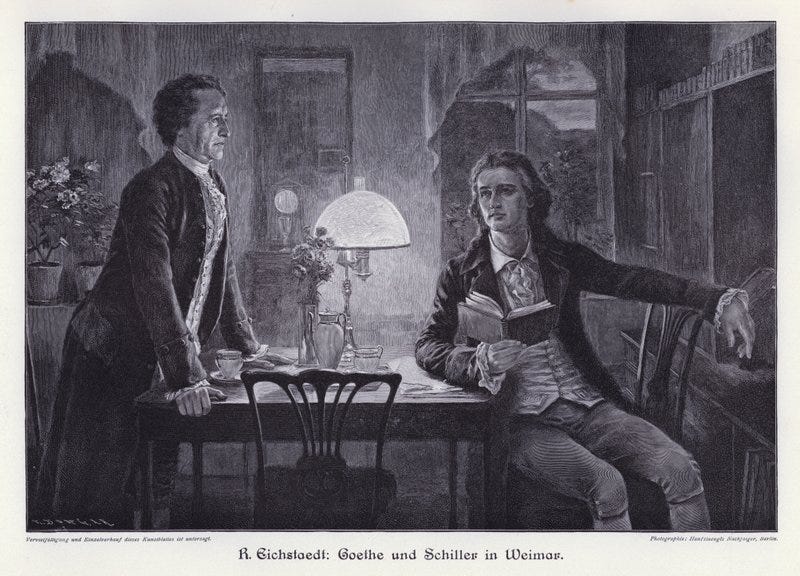From “The Romantic School” by Heinrich Heine (1835)
“...There was a craze for comparing the productions of the two poets, and opinions were divided. The Schillerians touted the moral splendor of a Max Piccolomini, a Thekla, a Marquis Posa and other Schillerian heroes of the stage, while on the other hand, they declared the Goethian roles, a Philine, a Gretchen, a Klärchen and similar pretty creatures, to be immoral images of woman. The Goethians observed smilingly, that the latter, as well as the Goethian heroes, were hardly to be represented as moral, that the promotion of morality, that one demanded from Goethe's poetry, were in no way the purpose of Art: for in Art there were no purposes, as in the design of the world itself, where only Man racks his brains over the concepts of "Ends and Means"; Art, like the world, is self-willed, and as the world always remains the same, while Man's conceptions of it incessantly change, so must Art, as well, remain independent from the transitory …
Keep reading with a 7-day free trial
Subscribe to The Chained Muse to keep reading this post and get 7 days of free access to the full post archives.




